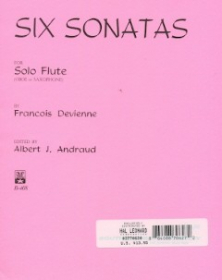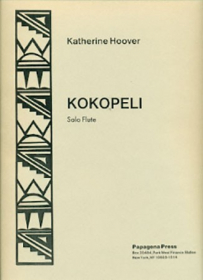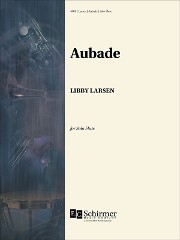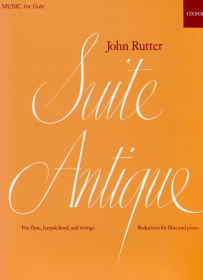Schubert, F :: Sonata in A minor, D. 821 'Arpeggione'
-
ComposerSchubert, F
-
InstrumentationFlute & Piano
-
PublisherInternational Music Company (IMC) [3325]
-
EditorStallman, Robert (trns)
-
Orchestrationfl, pn
-
Includes CD or Audio DownloadNo
-
ClassificationNot Applicable
-
GenreUndefined
Sonata in A minor, D. 821 'Arpeggione'
Schubert, F
International Music Company presents Franz Schubert's Sonata in A minor, D. 821 'Arpeggione' for flute and piano, transcribed and edited by Robert Stallman.
Many nicknames of famous classical music works (which were often given by someone other than the composer) leave little doubt as to the character of that work. (Think of Beethoven s Moonlight Sonata or Eroica Symphony, for example.) But what kind of nickname is Arpeggione ? It doesn t evoke a character or a sentiment; instead, it refers to the instrument Schubert originally wrote the work for. Never heard one or heard of one? You re not alone. By the time Schubert wrote this piece, the arpeggione was nearly extinct. By the time the piece was published (decades after Schubert s death), it wasn t even a footnote.
As was so often the case, Schubert lavished his considerable melodic and harmonic gifts on a composition that had little chance of becoming well known. The Austrian luthier Johann Georg Staufer (1778 1853) built the first arpeggione around 1823. A hybrid of sorts between a cello and a guitar, the instrument had six strings (tuned like a classical guitar) and frets, but it was held between the legs and played with a bow. Prior to the instrument s relatively swift demise, there was a hardy band of arpeggione enthusiasts, and Schubert wrote the only significant work for the instrument for one of them, Vincenz Schuster.Whoever published the work in 1871 had the foresight to include a cello part, and there have probably been more performances of D. 821 on the cello than on any other instrument. The sheer content of the work has proven such a strong lure, however, that it s not unusual to encounter performances featuring the viola, double bass, flute, guitar, or clarinet.
The sonata is cast in three movements: Allegro moderato, Adagio, and Allegretto. The themes are effusive, the harmonies are often surprising (especially in the breathtaking slow movement), and the Allegretto hints at the kind of energy found in what the 19th-century musicians referred to as Gypsy music. We can only be grateful that, despite the basic extinction of its central instrument, the work remains one that can be enjoyed forever. Greg Hettmansberger, 2019
-
ComposerSchubert, F
-
InstrumentationFlute & Piano
-
PublisherInternational Music Company (IMC) [3325]
-
EditorStallman, Robert (trns)
-
Orchestrationfl, pn
-
Includes CD or Audio DownloadNo
-
ClassificationNot Applicable
-
GenreUndefined
All online purchases greater than $200 (before tax) are eligible for free shipping within the US. (Some Exceptions apply.) Online purchases over $200 being shipped to locations outside the United States do not qualify for free shipping.
Items returned from a purchase utilizing the free shipping offer that brings the original invoice under $200 will result in the original shipping charge being re-applied.
Once shipment has reached its destination according to the shipping carrier tracking information selected, Carolyn Nussbaum Music Company is no longer responsible for the package.
*Please note that some items may vary slightly from the pictures on our website as manufacturers make changes to their products.
We accept Visa, Mastercard, and Discover for online purchases up to $10,000.
You may also assemble your order online and pay offline using the "Offline Payment" payment method during the checkout process. In this case, once you submit your order, you will be contacted via phone or email for payment details before your order is processed. For offline orders we accept personal checks, bank checks, money orders, or travelers checks, with other legal tender acceptable only per arrangement.


















